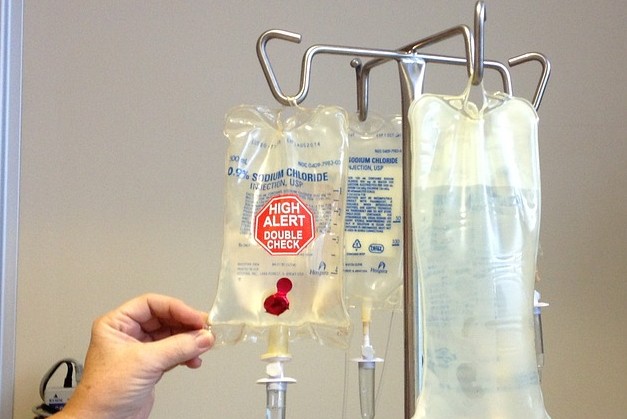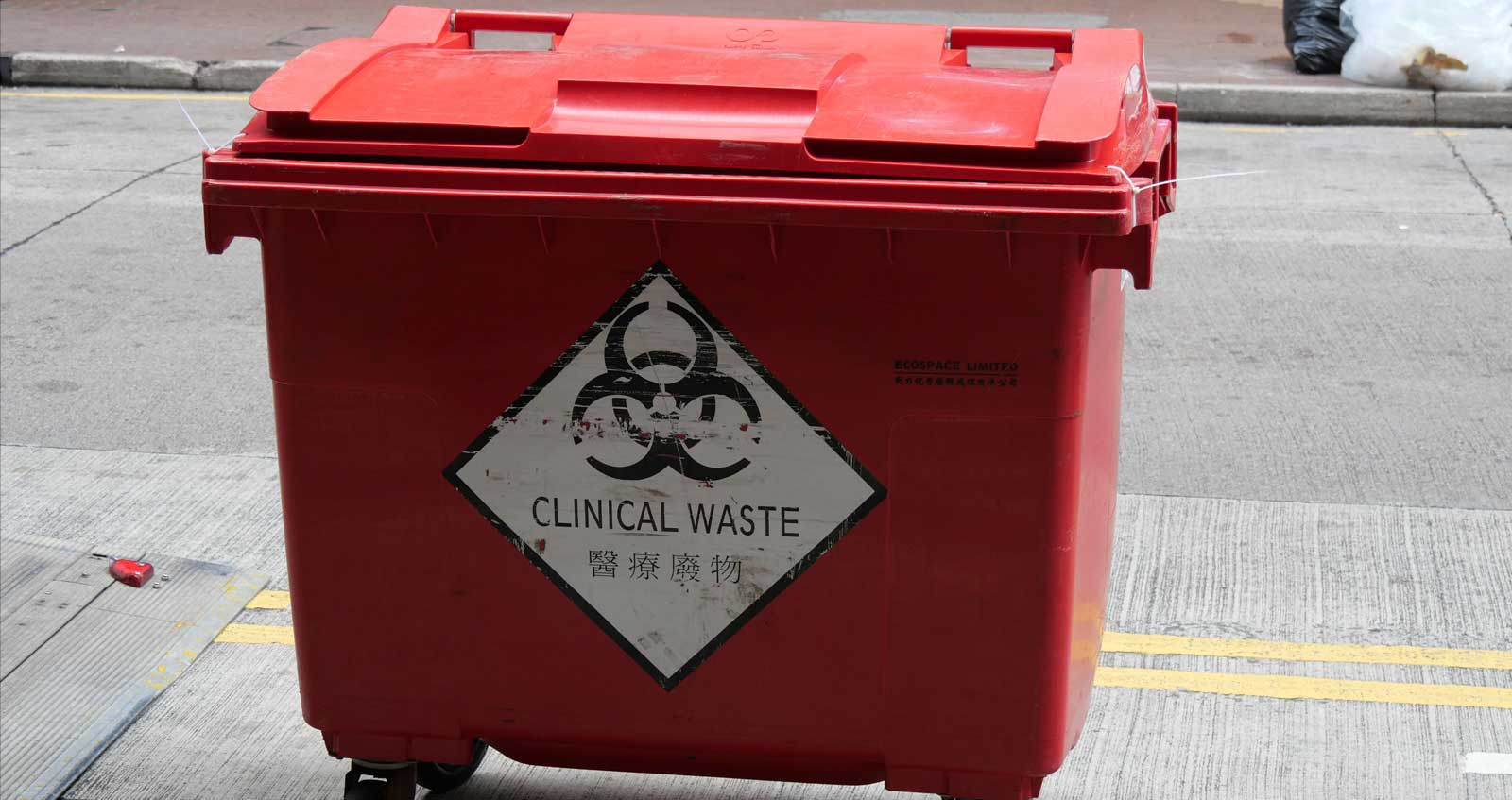Area Care: Smooth and Reliable Medical Waste Removal Near Me
Wiki Article
Keep Ahead of Rules: Expert Guidance on Medical Waste Disposal
In a globe where the health care industry is regularly progressing, it is essential for clinical centers to stay in advance of laws when it comes to the proper disposal of clinical waste. From understanding the various groups of medical waste to applying the best collection and partition approaches, this conversation will certainly provide important insights and workable pointers to assist facilities stay in advance of guidelines in the ever-changing landscape of medical waste disposal.Recognizing Medical Waste Categories
Recognizing clinical waste categories is important for correct disposal and administration in medical care centers. Medical waste refers to any type of waste produced by health care tasks that might posture a threat to public health or the environment. It is essential to categorize clinical waste precisely to guarantee its secure handling, therapy, disposal, and transport.There are several classifications of clinical waste that healthcare facilities require to be acquainted with. The most typical categories include contagious waste, pathological waste, sharps waste, pharmaceutical waste, and chemical waste. Each group has certain guidelines and policies for its proper administration and disposal.
Transmittable waste consists of materials contaminated with blood or other bodily liquids, such as handwear covers, dress, and research laboratory societies. Pathological waste refers to human tissues, organs, or body parts that require special delivery and disposal. Sharps waste includes utilized needles, syringes, and other sharp items that can trigger injury and send infections. Drug waste consists of run out, extra, or infected medicines that require mindful handling and disposal. Chemical waste consists of solvents, anti-bacterials, and various other chemical materials made use of in health care centers.
Staying Up-To-Date With Regulatory Adjustments
Remaining present with regulatory changes is vital for medical care facilities to guarantee compliance and proper monitoring of clinical waste disposal. medical waste removal. With laws frequently progressing, it is vital for healthcare centers to remain up-to-date to avoid fines, penalties, and potential harm to the setting and public health and wellnessTo stay in advance of governing modifications, health care facilities must develop a system for tracking and tracking updates. This can be done by subscribing to governing newsletters, participating in workshops and meetings, and actively participating in sector associations. In addition, facilities need to designate a personnel or group responsible for remaining educated and distributing details to relevant stakeholders.
Routine interaction with regulative firms is likewise vital. Healthcare facilities need to establish partnerships with local, state, and federal firms to ensure they are conscious of any kind of changes in guidelines that might affect their waste administration techniques. This can be done via routine conferences, engagement in public comment periods, and positive involvement with regulatory companies.
Moreover, health care facilities must think about partnering with waste management firms that focus on clinical garbage disposal (medical waste disposal services with WasteX). These firms are typically skilled in the most up to date regulations and can supply advice and assistance to ensure compliance
Carrying Out Appropriate Collection and Partition Approaches
To properly manage medical waste disposal, healthcare facilities should establish appropriate collection and segregation techniques according to regulative standards. Carrying out these techniques makes sure the safe handling and disposal of potentially hazardous materials, protects the environment, and minimizes the risk of infections and injuries to medical care employees and the public.
Appropriate collection and segregation methods involve using marked containers and identifying systems. Health care facilities should give plainly identified containers medical waste disposal services with WasteX for different sorts of clinical waste, such as sharps, contagious waste, pharmaceutical waste, and non-hazardous waste. These containers should be color-coded and plainly significant to avoid complication and advertise easy recognition.
In addition, health care facilities need to train their staff on the proper procedures for collecting and setting apart medical waste. This includes educating them on the various types of waste, the appropriate containers to make use of, and the value of following regulations and standards. Regular training sessions and refresher course courses need to be carried out to ensure that team member stay up-to-date on finest practices.
In addition, healthcare centers ought to develop a system for regular collection and disposal of medical waste. This might include partnering with qualified waste administration firms that focus on clinical waste disposal. These business will certainly ensure that the gathered waste is transferred and disposed of in compliance with governing requirements.
Selecting the Right Disposal Approaches
Incineration is among the most typical and efficient approaches for getting rid of certain kinds of medical waste, such as pathological waste and sharps. It entails the controlled combustion of waste at heats, decreasing it to ash. Incineration can release harmful pollutants into the air and add to air contamination.

Chemical therapy entails the medical waste disposal services with WasteX usage of chemicals to reduce the effects of the waste and disinfect. Microwave treatment uses microwave energy to warm and decontaminate the waste.
Guaranteeing Conformity With Paperwork and Training
After very carefully considering the suitable disposal techniques for clinical waste, healthcare facilities have to ensure compliance with policies and lessen environmental impact by carrying out effective documentation and training procedures. This action is crucial in preserving a risk-free and sustainable atmosphere for both healthcare workers and the general public.
Health care workers who handle medical waste ought to get ideal training on waste partition, dealing with, and disposal treatments. By giving comprehensive training, health care centers can equip their team to make informed decisions and decrease the threat of incorrect waste disposal.
Conclusion
In final thought, remaining ahead of laws in medical waste disposal is crucial for healthcare centers. medical waste removal service. Recognizing the different categories of medical waste, staying updated with governing changes, implementing correct collection and partition methods, picking the ideal disposal methods, and making sure conformity via documents and training are all necessary actions. By following these guidelines, health care companies can effectively take care of and get rid of of medical waste in a risk-free and responsible fashionFrom comprehending the different groups of medical waste to applying the ideal collection and segregation techniques, this discussion will certainly give important understandings and actionable pointers to assist centers stay in advance of regulations in the ever-changing landscape of medical waste disposal. - medical waste disposal services with WasteX
The most typical groups consist of infectious waste, pathological waste, sharps waste, pharmaceutical waste, and chemical waste. Healthcare facilities ought to supply plainly classified containers for various kinds of clinical waste, such as sharps, transmittable waste, pharmaceutical waste, and non-hazardous waste. Healthcare facilities should establish an extensive system to tape-record and read this article track all elements of medical waste disposal, including types of waste produced, quantities, and disposal techniques utilized. Healthcare workers who deal with medical waste should receive appropriate training on waste segregation, handling, and disposal treatments.
Report this wiki page